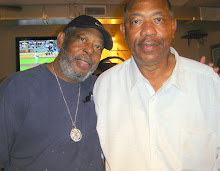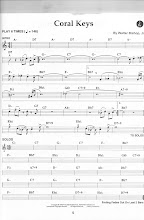So, from an anthropological angle:
Society - Depending on the social network you run into, you’ll find anything from a chaotic miasma (MySpace) to something quite a bit more exclusionary (LinkedIn). Generally, sites who’s members have made an investment in establishing a consistent and reliable profile are something that can be approached strategically. These groups are also quite a bit more vengeful of people step to them with a spam nozzle.The definition of society in this case, connotes culture and if you look at a social network that provides value beyond entertainment to it’s people, you will find a culture with rules and behavioral norms. For something as vast, sprawling and duct taped together as MySpace, a culture is difficult to define. Beyond that, it’s infrascructure does not facilitate the emergence of cultures. LinkedIn has an infrastructure that seems designed for a specific kind of culture and Twitter’s culture has kind of happened by chance and a growing understanding of what the medium is.
Culture - Traditions and rules that are learned after joining. Obviously, the infrastructure has a say in how this emerges, but the most interesting aspects of a social network are the behaviors that emerge which are unique to that network. The culture of LinkedIn can be exclusive and has an element of screening involved. This is to ensure that your associates and network nodes to not eventually become an embarrassing liability to you. Twitter’s solution is to allow anyone to be followed but the option to follow back is at the user’s discretion. This makes exposure via association less of a risk. Therefore, a more lighthearted dialog occurs here where business, interests and daily mundane life can all become intertwined. In summary, one is more serious than the other and any kind of approach toward making a plug for your service, product or blog will necessarily differ. Before you risk your brand’s name, make sure to evaluate the culture of a given network and estimate the kind of response you will get for a given campaign.
Language - In social media, this does not refer to spoken or written language, it refers to the format of the user posts and interactions. In something like microblogging, the language is a short 140 character message, with a shortened link, if appropriate. Knowing that the Twitter language has only 140 characters is important if you want to drive traffic. Make sure that tweet is a zinger. Build reputation by circulating other site’s links that are good and for those that are linked to your site add something like ‘Must see…’. In this way you’ve developed trust by being consistently good so that when you say ‘Must see…’ people will actually respond with a click. Messages, are typically what one is doing at the moment, what one has seen on the web, or an opinion on a current event. YouTube, is comprised of a video and a summary on that video. Responses to posts/uploads/tweets not fitting into the accepted format can be negatively recieved and can result in a ‘brand hit’.
Values - What the group regards as good, bad, desirable and undesirable. There are some things that are almost universally viewed as bad and others that are almost universally viewed as good. Viagra seems to be negatively received almost universally, the natives threw that priest in the Tutupi Volcano years ago. The safest bet for many social networks is the ability to find or produce content that is valuable to other group members. In other cases, like LinkedIn the network values associations, those who have or can produce such contacts are heavily valued and this clout can be transformed into monetization.
Norms - Rules for the interaction. This follows nicely from values. Norms on more leviathanic social networks like MySpace are poorly defined and enforced. Twitter will cancel accounts or people running spam bots. Other norms for higher value networks are a completeness of profile, interesting content, contacts that are also interesting and authority. In some networks, spamishness is not necessarily frowned upon if the value can be found in there somewhere. On other networks, even the slighest bit of self promotion results in brand damage. It is important to know what these norms are so that you can widen the spray or target the laser as appropriate. Before dismissing tight targeting and adherence to more restrictive norms, remember that playing by a harder set of rules and being able to communicate on that level is rewarded with a loyalty that turns into a dialog, possibly even an audience at the feet of the High Priest Robert Scoble.
Status - Twitter is a prime example of authority. For a variety of reasons, some tweeps have followers in the tens of thousands. They are regarded as authoritative. In fact, Twitter as a network is considered to be authoritative since many of the tech, gadget, design and news worlds linkerati are regularly using the service. Alot of the stories coming from the service are breaking news. There are already a number of Twitter services and spin-offs designed to monitor and improve twitter rank. Naturally, from this monetization schemes have emerged under the assumption that highly rated accounts will be attracting al ot of viewers that are highly targeted. Friendfeed and Facebook rooms and groups also gain authority through the number of members in the room. Posting valued links and information in these rooms contributes to one’s status. Status is no joke either. As we all know, the king of the tribe spends all of his waking hours collecting tribute from the peasants who spend theirs digging in the dirt. In the hyper-connected, autonomous, networked, globalized bytescape of today, this hasn’t changed one bit.
Role - What one’s function and purpose is in a society. Neophytes generally, spend alot of time observing and making mistakes. Gradually, people find their niche and develop their profile along those lines to whatever degree they desire. To raise status, role becomes important. The reason people gain status on social networks, and this represents a change over the days of the Lizard King Bonanotanga, is that the king really is wearing clothes. That is, Dvorak, Kawasaki ,Smashing Magazine and other high-octane tweeps really are .......
I bet you will hit that link now!
http://microgeist.com/2009/02/an-anthropological-look-at-twitter-and-social-media/
Saturday, March 28, 2009
Subscribe to:
Post Comments (Atom)
































































No comments:
Post a Comment